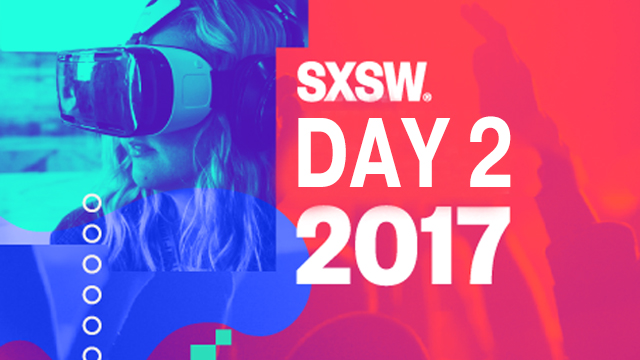SXSW Day 2: “Old school” digital.
By Ken Nippes, Senior Vice President, Media Director
OK it’s the year of the bot here at SXSW. Don’t know what that means? Me neither. That’s for tomorrow’s sessions. But if I had a brisket taco for every time I’ve heard the word “bot,” I’d be happy. And would need to run more. Anyway, I spent the day with some “old school” digital friends – influencers and behavioral targeting.
Session 1 — Enthusiasm vs. Influence: The Power of Community
Social media was tailor made for the cosmetics industry and e.l.f Cosmetics has done a great job harnessing its power to grow their business. While they employ high-profile influencers to promote their brand, they found that they also had an intense following of enthusiasts – people who loved their brand and still had decent, albeit much smaller, social followings. e.l.f created a mutually beneficial marketing program designed to involve and empower these enthusiasts while using them to drive the brand’s success.
An Instagram contest led to e.l.f selecting 50 enthusiasts to come to “Beauty-scape,” a multi-day meet-up where the enthusiasts heard about all the new things e.l.f had on the horizon while also learning how to hone their passion – make-up tips, social media seminars, and small group sessions around empowerment and self-confidence. In return, e.l.f created loyalty in one of the most disloyal categories out there.
Key takeaways for brand marketers:
- Brands must play the long game. A program like this didn’t drive short term sales but is incredibly important to contributing to the long term growth of the company.
- Social is an investment. We often think of it as “free” or at the very least inexpensive. But it requires a different kind of currency – manpower.
- Insights drive everything. By using data, e.l.f was able to see the groundswell of enthusiasts. They listen to this new and growing community to help shape their brand.
Session 2 — Cozy with Cookies: Our Brain & Behavior Targeting
What do you get when you combine a Marketing Professor, a PHD in Computer Science, and Googler? Clearly it’s a SX session on behavioral targeting. Namely the discussion was about cookies (the trail of breadcrumbs consumers leave around the interwebs) and how they affect marketing and society. We’ve all seen the stats that behavioral targeting works better than contextual targeting but can it also influence how they feel about themselves and non-purchase decisions they may make?
The most interesting aspect of the discussion was around a study where two sets of consumers were shown the same ads. One group had the ads identified as behavorially targeted to them. Those that had this targeting identified had their behaviors re-enforced and it even increased their self-esteem. For example, they saw an environmentally friendly product and not only were more apt to purchase product, but also thought, “this brand knows I care about that.” Not only did they tend to purchase the brand, they tended to continue their environmentally conscious behavior outside of the purchase experience.
Key takeaways for brand marketers:
- Don’t be afraid of implementing the AdChoices icon. If people opt out, fine. Better to give them the option. If they don’t, it can subconsciously reinforce that this must be a brand for them.
- Know your target. Younger consumers are much more open to brands using personal information or online behavior.
- On ecommerce sites, don’t let recommendations kill discovery. If someone purchased a book on your site, don’t just recommend other books by that author. Use cookie data to identify other products that the book’s purchaser is likely to want.
Session 3 — Snapchat for Business: Working with Influencers
This session was run by a bunch of Snapchat influencers. Maybe I’m old (I know, I’m old), but I don’t think about Snapchat as having influencers producing content. But they are out there. And many have been playing on the platform long before advertisers have been involved.
Key takeaways for brand marketers:
- If you use a Snapchat influencer, get ready for quick interaction. The nature of the platform is such that most snap-backs, inquiries, and interaction happen within the first 24 hours of the snap.
- Sanpchat creations aren’t like those that work on Facebook and Instagram. The platform differences need to be taken into account.
- A giant weakness of Snapchat is the lack of analytics. Now that’s it’s a public company, one would think this will change. But for now, brands are stuck relaying on antidotal information (selfies/info people put in snaps) from influencers on who they are reaching.
BONUS – How about an insight from a session I snuck into the end of (and re-enforced something I feel strongly about)? Your brand better have a damn good reason to build an app. How many people have apps on their phone that you never use? Right, all of us. How many people spent 80% of their time on 5 or 6 apps? Right, all of us. The app store is a graveyard. Of course there are exceptions but brands are usually better off figuring out how to message in existing apps than creating their own.
More Insights
- March 10, 2017 SXSW Day 1: Truth.
- February 15, 2017 Home sweet home improvement.
- February 1, 2017 AdExchanger 2017 Industry Preview: Data and martech/adtech.
